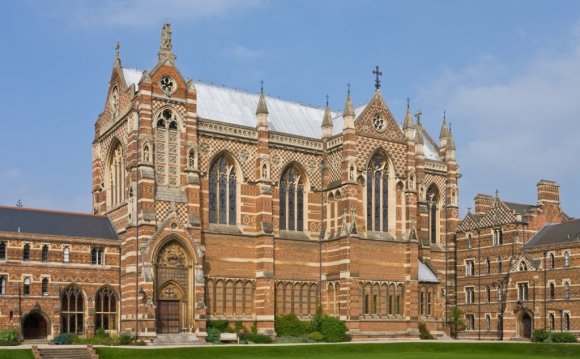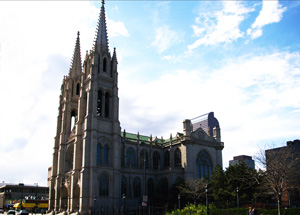
The style also flourished in commercial and collegiate structures. Bryn Mawr and Princeton University (1896), by Cope and Stewardson, and Yale (1917), by James Gamble Rogers, are among the first and most noteworthy of the “Collegiate Gothic” campuses. The Gothic style was well suited to verticality and was therefore frequently employed in tall structures. The climax of Collegiate Gothic architecture was the Cathedral of Learning (1925), the skyscraper for the University of Pittsburgh, by Charles Zeller Klauder. Another noteworthy skyscraper is the 52-story Woolworth Building (1913) in New York City, by Cass Gilbert.
The Late Gothic Style is characterized by simpler and smoother features than those of the preceding High Victorian Gothic. Polychromy, the prominent feature of High Victorian Gothic, is rare, as is the mannerist manipulation of scale. The Cathedral of the Immaculate Conception (1902) at 301 East Colfax Avenue, with its French Gothic precedent by Leon Coguard, and St. John’s Cathedral (1911) at 1313 Clarkson Street, by Tracy and Swarthwout, are both prominent examples of the Late Gothic Revival style in Denver.
• Pointed arches
• Simple, smooth stone surfaces
• Leaded stained-glass windows










